Published June-30-2022
Searching for Fascinating Wildlife: Cotingas & Stunning Poison Dart Frogs
Popa Island is a recommended attraction during your stay in Tranquilo Bay. If you are a serious bird and amphibian watcher or love animals and nature, do not miss meeting the Snowy Cotinga and the Strawberry Poison Dart Frog.

Hugo Santa Cruz
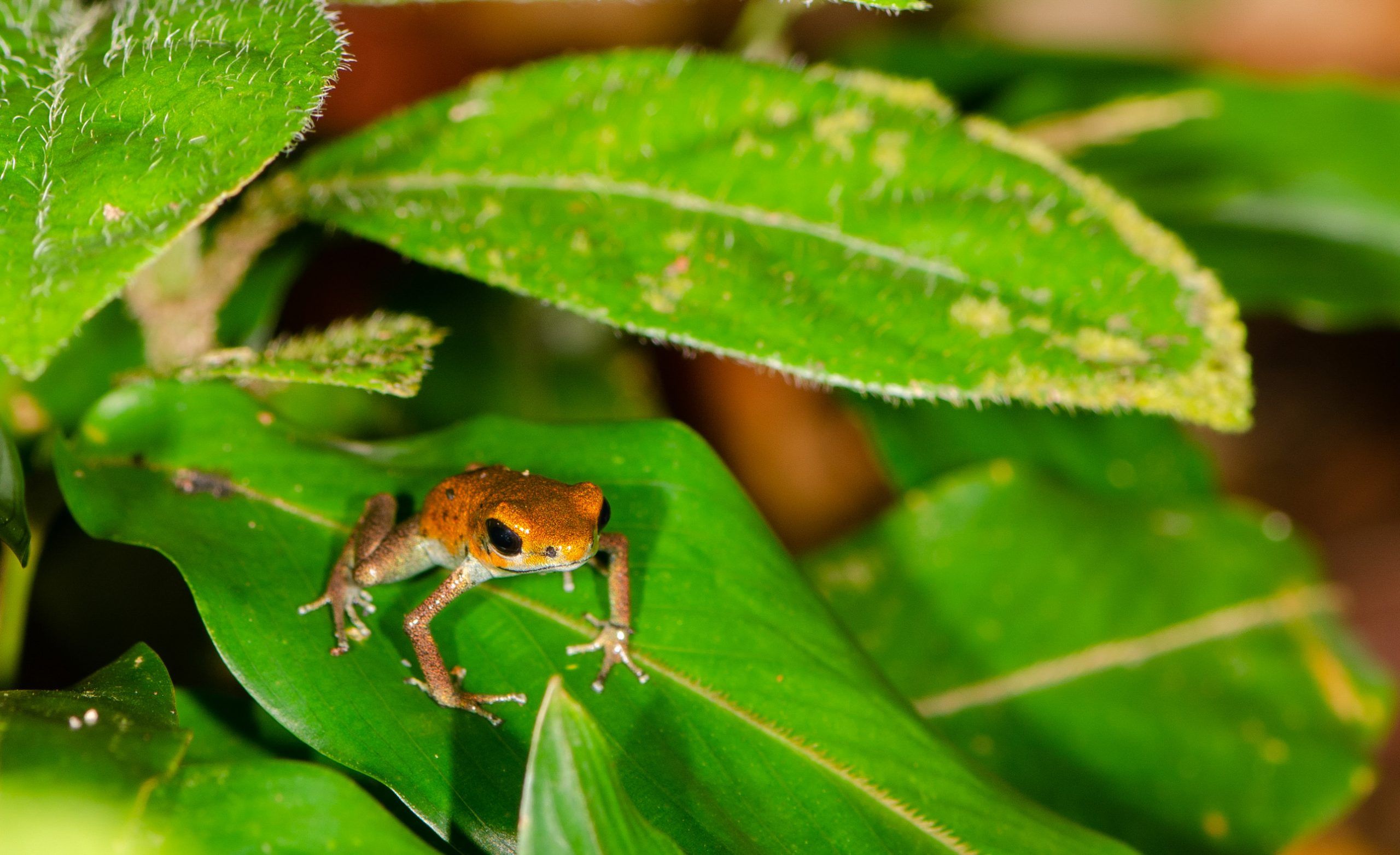
Life bird! We almost always hear this statement from our guests after observing the Snowy Cotinga for the first time. This elusive bird is one of the rarest species on our list and, therefore, very important in our tours.
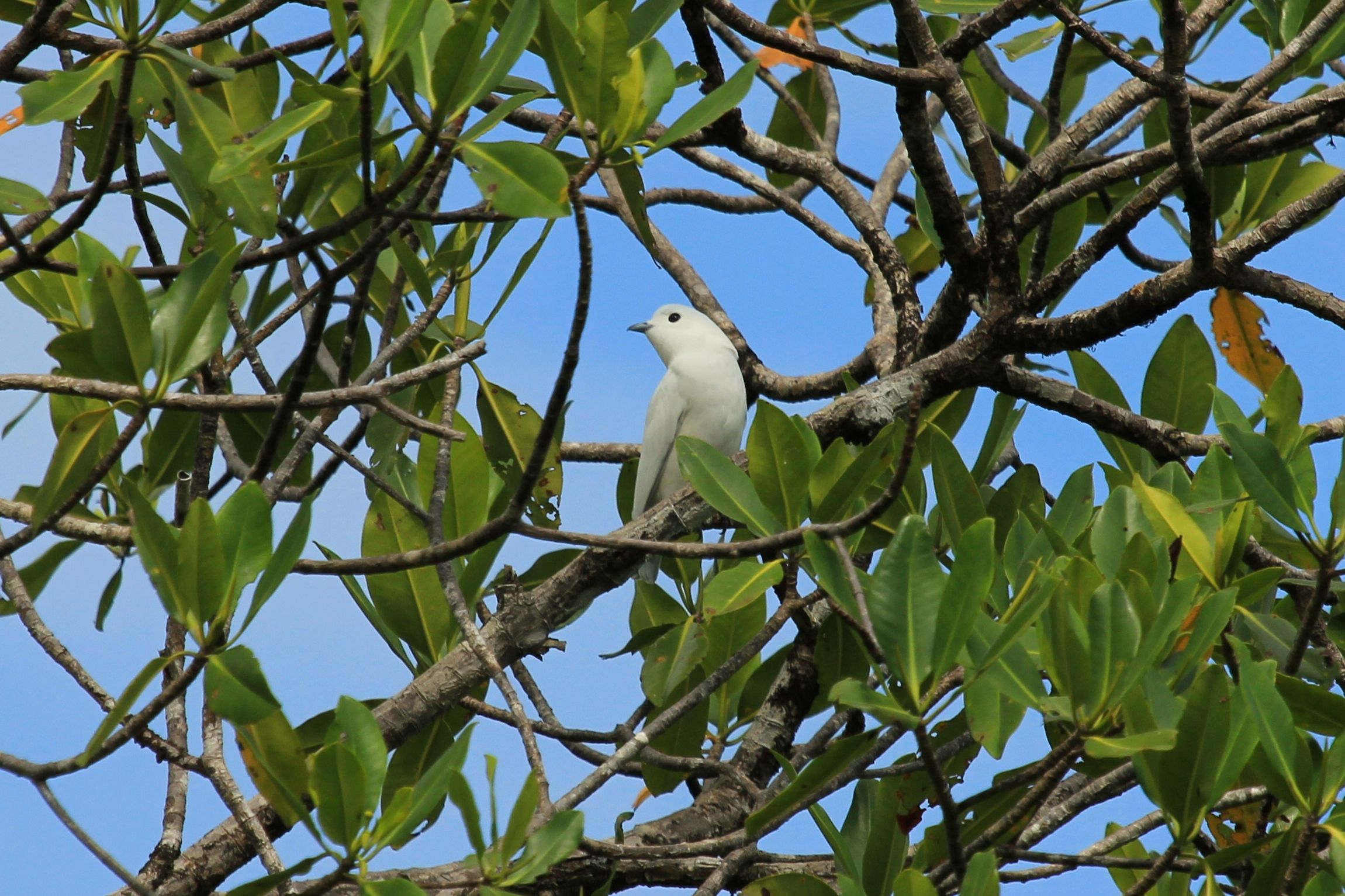
The Snowy Cotinga or Carpodectes nitidus is endemic to Central America, restricted to the continental Caribbean side, from northern Honduras to northwestern Panama.
This bird is not easy to find, and its population has declined due to habitat loss throughout the Americas. Bocas del Toro is one of the few places where this species is found in Central America and the only place where it can be seen in Panama.
Less than ten minutes from Tranquilo Bay by boat, we find this cotinga on the northern edge of Popa Island. It likes to perch for somewhat prolonged periods in the emergent trees of the upper canopy of the forest adjoining the island’s mangroves. Sometimes in pairs or solitary and rarely in small groups of up to four individuals.
The cotinga is almost unmistakable; it does not overlap with other white cotingas. However, you may be able to confuse it at first sight with some tityra, similar in size, apart from the dominant white. Still, the facial variances that make them different are noticeable.
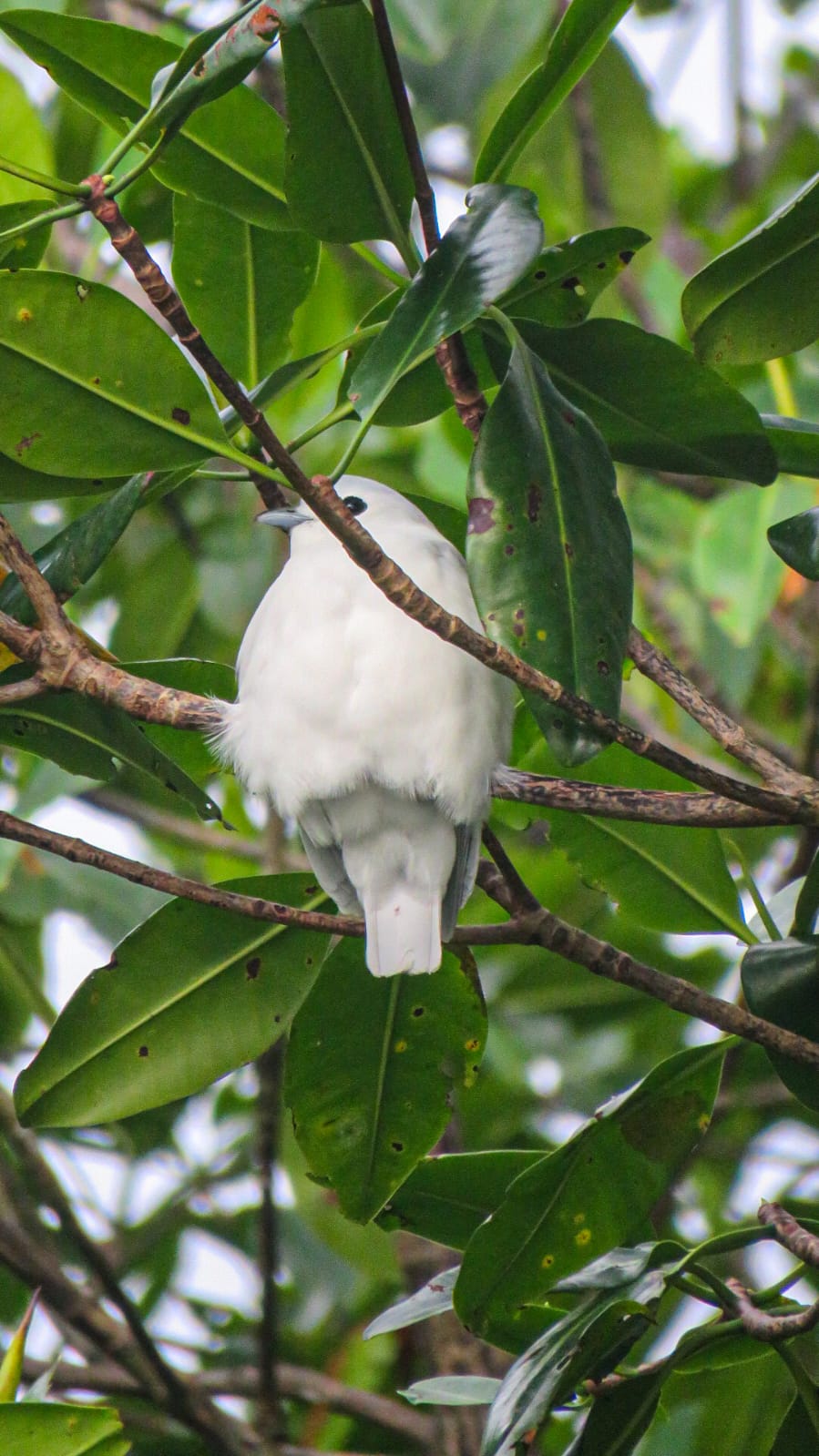
Males are white at first sight, but upon further inspection, you notice some bluish-grey areas on the crown, nape, scapulars, rump, and tail. The females are generally quite different, much grayer, and have a blackish crown and mantle. Their scapulars and rump have brown coloration, while the neck, chest, and belly are grayish-white. They have a noticeable white eye-ring that contrasts with the dark iris. Male juveniles, as in most birds, can resemble females.
These cotingas are completely frugivorous (fruit feeders). Their favorite trees are from the families: Lauraceae, Loranthaceae, and Moraceae (Ficus). This species may perform micro migrations according to the fruiting of their favorite trees. Males can make sounds but are very rarely heard. There are no published recordings of this species.
Of course, this is not the only bird present in this area. It is also possible to spot toucans, kingfishers, woodpeckers, and mangrove specialties such as Mangroove Cuckoo and Mangroove Warbler (Yellow W.).
But the birds are not the only protagonists of this tour; the famous Strawberry Poison Dart Frog or Oophaga pumilio is also found here. As soon as we turn off the engine and get off the boat, we can hear these tiny and precious frogs sing.
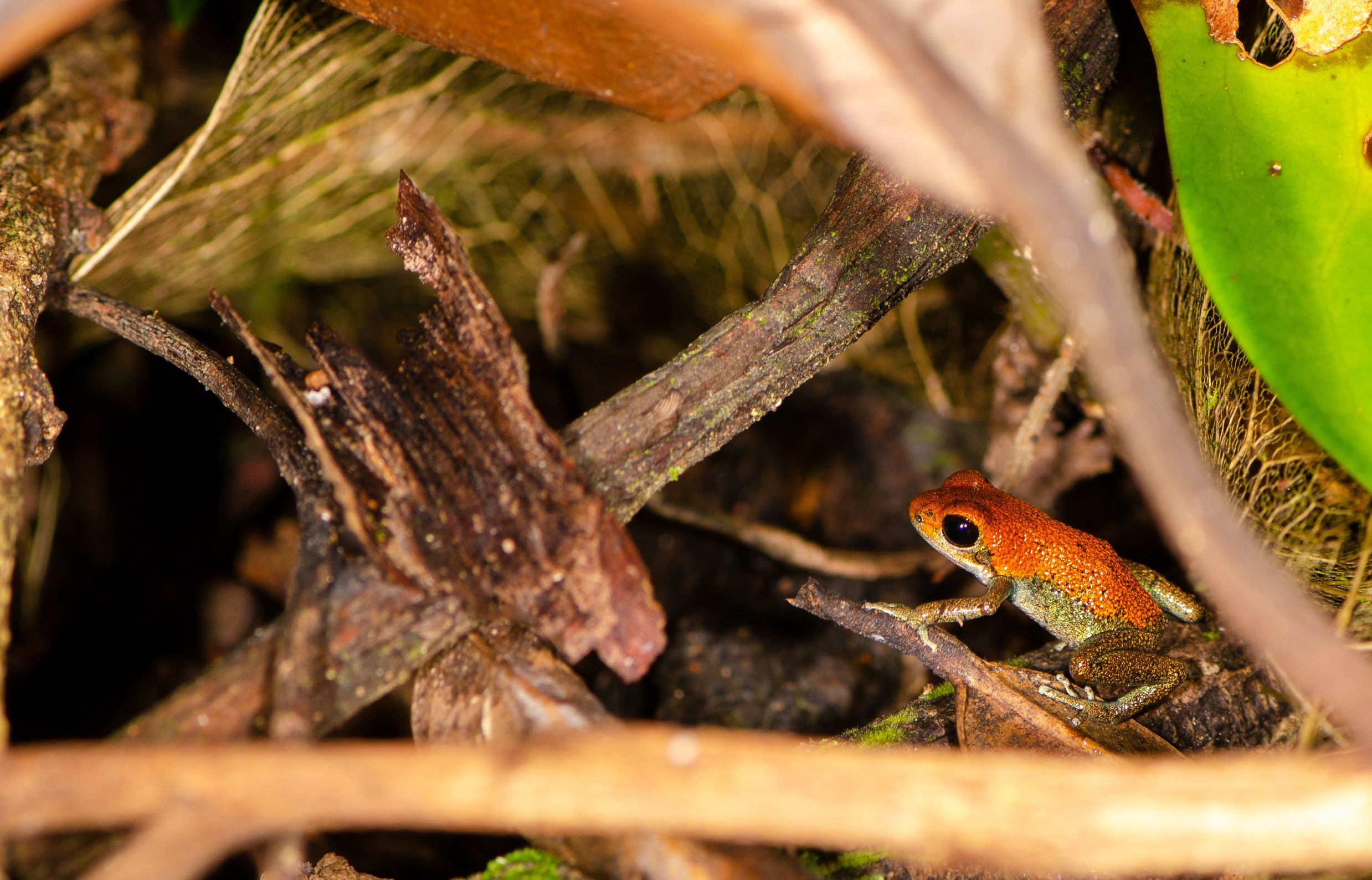
When the islands separated from the continent around 10,000 years ago, each island developed particular morphologies and sub-speciations in various animals after the last global glaciation. The Strawberry Poison Dart Frog is the one that stands out the most, and this frog species holds the world record for the most extensive variations in its colors. Each island of the Bocas del Toro Archipelago has its morphology and variations; sometimes, they can be red, orange, blue, or yellow, and occasionally green; they can be of different colors simultaneously and be very different from one another. This frog has about 30 different morphs and about 150 variations. Still, you will be able to recognize them because they do not vary in size. All the males emit the same sounds, somewhat similar to the calls of the cicadas but in lower tones.
The frog is also poisonous. It has glands with neurotoxic poison in the skin, which, although they do not represent a danger to people, you should never touch. Its aposematic coloration warns predators of its toxicity, so it has none. It moves about calmly during the day, and the origin of its poison may come from ants and other insects.

These amphibians can be very intelligent; their behavior is impressive. The parents are paternalistic, and both are in charge of caring for the young in their different stages. The female lays between two to five eggs away from the sun, usually on the leaves, near some small body of water. The male fertilizes and moistens them, keeping them alive for the next ten to twelve days. Once the tadpoles are born, the female carries them one by one on her back to bromeliads that could be fifteen meters high. She will return two to three times a week, for six to eight weeks, to lay infertile eggs that will serve as the only food for the tadpoles at this stage of their life.
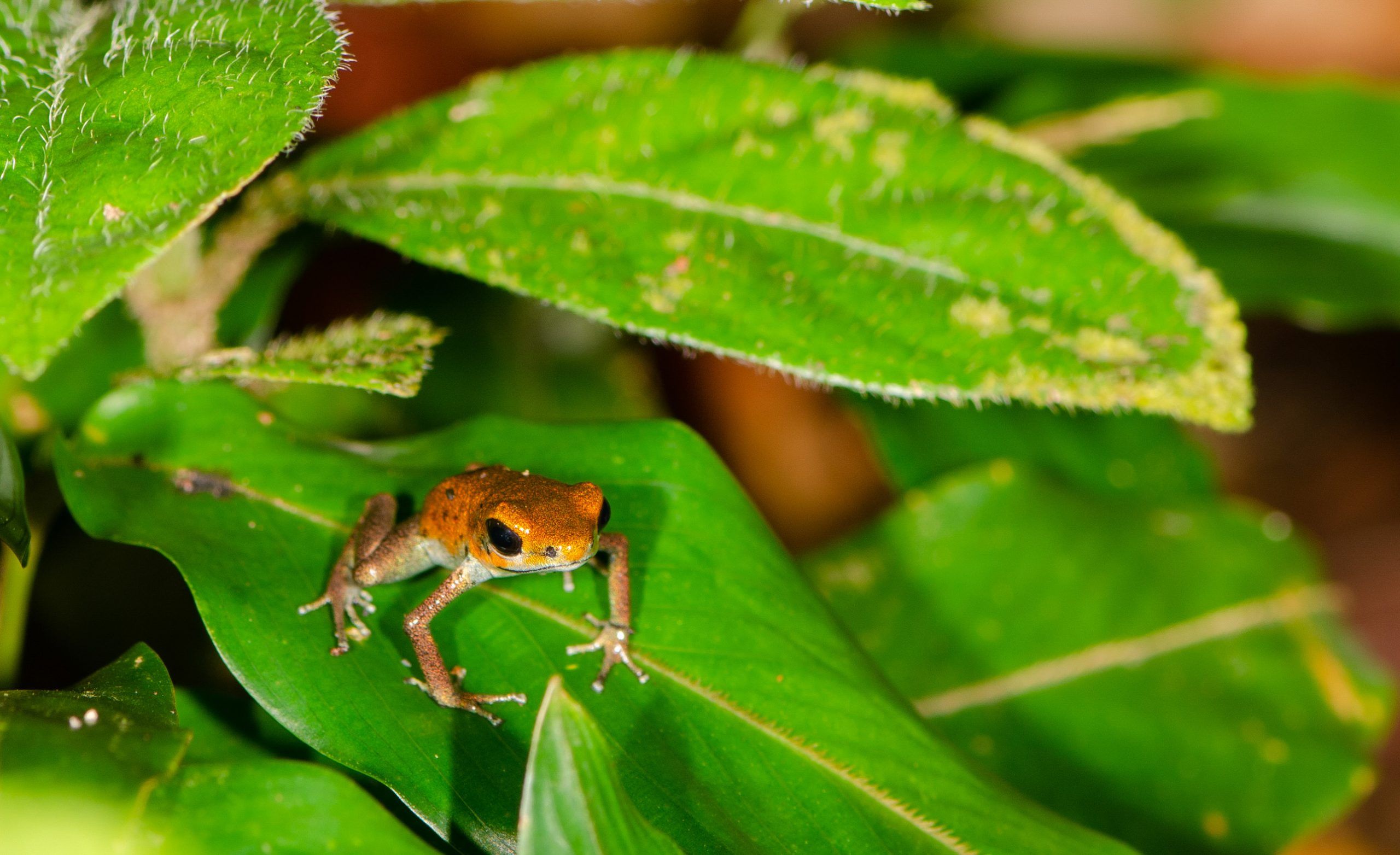
Popa Island is a recommended attraction during your stay in Tranquilo Bay. If you are a serious bird and amphibian watcher or love animals and nature, do not miss meeting the Snowy Cotinga and the Strawberry Poison Dart Frog.